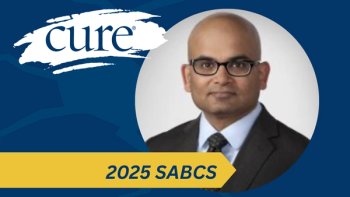
FDA Approves Study on Focused Ultrasound to Open Blood-Brain Barrier
In the first such clinical trial in the United States, researchers will evaluate focused ultrasound to breach the blood-brain barrier
In a first-of-its-kind Food and Drug Administration (FDA)-approved clinical trial, researchers from the University of Maryland School of Medicine are investigating the use of MRI-guided focused ultrasound to open the blood-brain barrier, which will, in turn, help to deliver cancer-fighting drugs to brain tumors such as glioblastoma.
“Blood-brain barrier disruption for treatment of neurological diseases is a major opportunity for numerous conditions afflicting patients. For example, Parkinson’s disease, Alzheimer’s disease, brain cancer — these are all diseases where, currently, treatment is limited by the blood-brain barrier,” principal investigator Graeme F. Woodworth, M.D., explained in a video.
Treatments such as surgery, chemotherapy, radiation, tumor treating fields (TTF) therapy or targeted therapy only slow the progression of glioblastoma and reduce symptoms. These tumors are typically unresponsive to therapy because of the
“So, if we can open the blood-brain barrier, and not only open it, but open it in a controlled, safe way, that is reversible — meaning it is not open permanently – and also open it in a specific, targeted location so that it is not affecting the entire brain or areas that are not affected by the disease that we are interested in treating, that is a huge opportunity to improve therapeutics,” Woodworth, who is professor of neurosurgery at the University of Maryland School of Medicine, said in the video.
“And (a huge opportunity) not only to improve therapeutic delivery to that area, but it may allow us to limit the dose that is necessary to deliver effective treatment (and reduce toxic side effects and make treatments safer and more effective for patients),” he added.
The
The number and severity of device- and blood-brain barrier disruption procedure-related side effects will serve as the primary endpoint of the study. The extent and reversibility of the blood-brain barrier opening will also be evaluated and determined by the degree of contrast enhancement seen on the post-procedure MRI with a contrast agent.
As part of the preoperative planning process, patients will undergo a standard MRI scan on the morning of the scheduled surgery. Guided by this MRI, doctors will target a precise region within the tumor with ultrasound, while injected microbubbles are circulating within the bloodstream.
“The process involves injecting microscopic inert gas-filled bubbles into a patient’s bloodstream and then oscillating the microbubbles (causing them to move back and forth) with highly targeted sound waves, stretching the blood vessel walls to create temporary openings,” according to a press release issued by the Stewart Greenebaum Comprehensive Cancer Center (UMGCCC) at the University of Maryland Medical Center, where Woodworth is also the director of the Brain Tumor Treatment and Research Center.
These openings will, in turn, allow the MRI contrast agent, gadolinium, to pass into the brain tissue. The MRI scan will then be completed, documenting the extent to which the blood-brain barrier was disrupted.
Although there are similar research studies being conducted in other countries, this was the first time the FDA approved a clinical study using this technology and approach; and in a few months, the researchers plan to open another trial to evaluate this approach with temozolomide in newly diagnosed patients with glioblastoma.
“Our physician-scientists are leading major research studies and are at the forefront of efforts to determine how this new technology can be used to provide better treatments for patients,” E. Albert Reece, M.D., Ph.D., MBA, dean of University of Maryland School of Medicine, said in the release.




